Any lover of shellfish will attest that the joy of eating a delicious piece of shellfish can quickly be eclipsed by texture. As much as one grain of sand between the teeth will entirely change the focus from taste to texture, and it will cease to be enjoyable. Thankfully it is possible to enjoy a meal of freshly prepared clams without chewing through a mouthful of sand to do so.
Clean the outside of the clam. Put them in a bowl of cold water, to insure you do not kill them in the process. You will need them alive for the next step. Use a cleaning brush to clean the outside of the clams, rinsing them and placing them in another bowl of cold water until all of the clams appear clean from the outside.
Stir ¼ to ½-cup of oatmeal, corn meal, or flour into the bowl of water that contains the clams. Stir vigorously. It is nearly impossible to kill the clams by jostling them.
Place the clams in the refrigerator and walk away for 1 hour. The next part is up to the clams.
During the hour that they are in the refrigerator, the live clams will take the initiative to spit out all sand and impurities, leaving you will fresh, clean clam meat.
After an hour, repeat Step 1. The clams are ready to cook, clean of all sand.
Related Articles

How to Make Sure Cooked Clams Have No ...
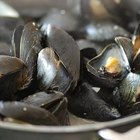
How to Clean Mussels With Cornmeal
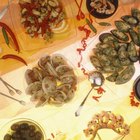
How to Clean Soft-Shell Clams (Steamers)
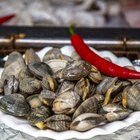
How to Cook Middle Neck Clams

How to Purge Sand Out of Clams With ...
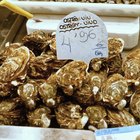
The Best Method to Store Fresh Oysters
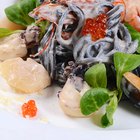
How to Cook Mussels & Clams Together

How to Cook Fresh Oysters to Make Stew
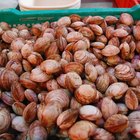
Can Fresh Clams Be Frozen?
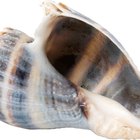
How to Remove Whelk Shells
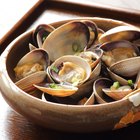
How to Cook Clams in the Shell
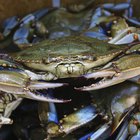
How to Cook Dead Crab

How to Boil Conch in the Shell

How to Cook Periwinkles
Crawdad Cleaning, Cooking, & Eating

How to Cook Escargot in the Shell
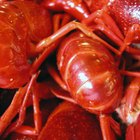
How to Peel & Devein Crawfish

How to Cook Live Lobster on the Grill

Cooking Half Shell Mussels

How to Cook Muskrat
Warnings
- Clams that do not open by themselves during the cooking process should not be eaten as they might make you sick.